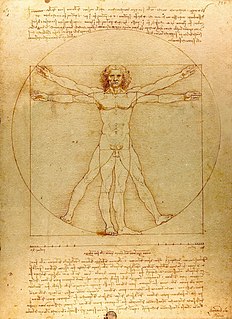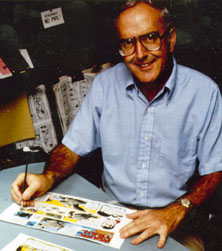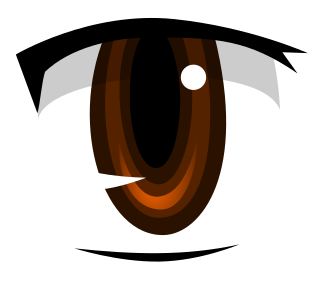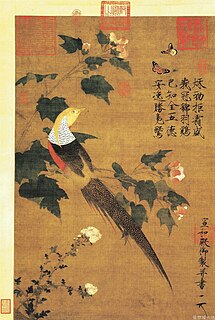
Drawing is a form of visual art in which a person uses various drawing instruments to mark paper or another two-dimensional medium. Instruments include graphite pencils, pen and ink, various kinds of paints, inked brushes, colored pencils, crayons, charcoal, chalk, pastels, various kinds of erasers, markers, styluses, and various metals. Digital drawing is the act of using a computer to draw. Common methods of digital drawing include a stylus or finger on a touchscreen device, stylus- or finger-to-touchpad, or in some cases, a mouse. There are many digital art programs and devices.

Printmaking is the process of creating artworks by printing, normally on paper. Printmaking normally covers only the process of creating prints that have an element of originality, rather than just being a photographic reproduction of a painting. Except in the case of monotyping, the process is capable of producing multiples of the same piece, which is called a print. Each print produced is considered an "original" work of art, and is correctly referred to as an "impression", not a "copy". Often impressions vary considerably, whether intentionally or not. The images on most prints are created for that purpose, perhaps with a preparatory study such as a drawing. A print that copies another work of art, especially a painting, is known as a "reproductive print".

A storyboard is a graphic organizer that consists of illustrations or images displayed in sequence for the purpose of pre-visualising a motion picture, animation, motion graphic or interactive media sequence. The storyboarding process, in the form it is known today, was developed at Walt Disney Productions during the early 1930s, after several years of similar processes being in use at Walt Disney and other animation studios.

An animator is an artist who creates multiple images, known as frames, which give an illusion of movement called animation when displayed in rapid sequence. Animators can work in a variety of fields including film, television, and video games. Animation is closely related to filmmaking and like filmmaking is extremely labor-intensive, which means that most significant works require the collaboration of several animators. The methods of creating the images or frames for an animation piece depend on the animators' artistic styles and their field.

A cartoonist is a visual artist who specializes in drawing cartoons or comics. Cartoonists include the artists who handle all aspects of the work and those who contribute only part of the production. Cartoonists may work in many formats, such as booklets, comic strips, comic books, editorial cartoons, graphic novels, manuals, gag cartoons, illustrations, storyboards, posters, shirts, books, advertisements, greeting cards, magazines, newspapers, and video game packaging.

Mangaka (漫画家) is the Japanese word for manga artist. Outside Japan, manga usually refers to a Japanese comic book, and mangaka refers to the author of the manga, who is usually Japanese. As of 2006, about 3000 professional mangaka were working in Japan.
Graphics are visual images or designs on some surface, such as a wall, canvas, screen, paper, or stone to inform, illustrate, or entertain. In contemporary usage, it includes a pictorial representation of data, as in c manufacture, in typesetting and the graphic arts, and in educational and recreational software. Images that are generated by a computer are called computer graphics.

Traditional animation is an animation technique in which each frame is drawn by hand. The technique was the dominant form of animation in cinema until the advent of computer animation.

A penciller is a collaboration artist who works in creation of comic books, graphic novels, and similar visual art forms, with focus on primary pencil illustrations, hence the term "penciller".
In graphic design and advertising, a comprehensive layout or comprehensive, usually shortened to comp, is the page layout of a proposed design as initially presented by the designer to a client, showing the relative positions of text and illustrations before the final content of those elements has been decided upon. The comp thus serves as a draft of the final layout, and is used as guide for further design changes and, ultimately, production.

Real-time computer graphics or real-time rendering is the sub-field of computer graphics focused on producing and analyzing images in real time. The term can refer to anything from rendering an application's graphical user interface (GUI) to real-time image analysis, but is most often used in reference to interactive 3D computer graphics, typically using a graphics processing unit (GPU). One example of this concept is a video game that rapidly renders changing 3D environments to produce an illusion of motion.

Gongbi is a careful realist technique in Chinese painting, the opposite of the interpretive and freely expressive xieyi style.

Graphic art software is a subclass of application software used for graphic design, multimedia development, stylized image development, technical illustration, general image editing, or simply to access graphic files. Art software uses either raster or vector graphic reading and editing methods to create, edit, and view art.
Resolution enhancement technologies are methods used to modify the photomasks in the lithographic processes used to make integrated circuits to compensate for limitations in the optical resolution of the projection systems. These processes allow the creation of features well beyond the limit that would normally apply due to the Rayleigh criterion. Modern technologies allow the creation of features on the order of 5 nanometers (nm), far below the normal resolution possible using deep ultraviolet (DUV) light.
Texture in painting refers to the look and feel of the canvas. It is based on the paint, and its application, or the addition of materials such as ribbon, metal, wood, lace, leather and sand. The concept of "painterliness" also has bearing on texture. The texture stimulates two different senses: sight and touch. There are four types of texture in art: actual, simulated, abstract, and invented texture.

An oil sketch or oil study is an artwork made primarily in oil paint in preparation for a larger, finished work. Originally these were created as preparatory studies or modelli, especially so as to gain approval for the design of a larger commissioned painting. They were also used as designs for specialists in other media, such as printmaking or tapestry, to follow. Later they were produced as independent works, often with no thought of being expanded into a full-size painting.

The visual arts are art forms such as painting, drawing, printmaking, sculpture, ceramics, photography, video, filmmaking, design, crafts, and architecture. Many artistic disciplines such as performing arts, conceptual art, and textile arts also involve aspects of visual arts as well as arts of other types. Also included within the visual arts are the applied arts such as industrial design, graphic design, fashion design, interior design and decorative art.
Pouncing is an art technique used for transferring an image from one surface to another. It is similar to tracing, and is useful for creating copies of a sketch outline to produce finished works.

A colored pencil, coloured pencil, pencil crayon, lead or coloured/colouring lead is an art medium constructed of a narrow, pigmented core encased in a wooden cylindrical case. Unlike graphite and charcoal pencils, colored pencils' cores are wax- or oil-based and contain varying proportions of pigments, additives, and binding agents. Water-soluble (watercolor) pencils and pastel pencils are also manufactured as well as colored leads for mechanical pencils.













